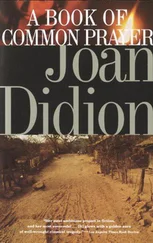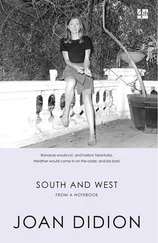Some of this is romantic (the indistinct Indians), some washed with a slightly falsified golden light, in the tradition that runs from Bierstadt’s “lustrous, pearly mist” to the “Kinkade Glow.” Most of these paintings, however, reflect the way the place actually looks, or looked, not only to Joan Irvine but also to me and to anyone else who knew it as recently as 1960. It is this close representation of a familiar yet vanished landscape that gives the Irvine collection its curious effect, that of a short-term memory misfire: these paintings hang in a city, Irvine (population more than one hundred and fifty thousand, with a University of California campus enrolling some nineteen thousand students), that was forty years ago a mirror image of the paintings themselves, bean fields and grazing, the heart but by no means all of the cattle and sheep operation amassed by the great-grandfather of the founder of the Irvine Museum.
The disposition of such a holding can be, for its inheritors, a fraught enterprise. “On the afternoon of his funeral we gathered to honor this man who had held such a legacy intact for the main part of his ninety-one years,” Jane Hollister Wheelwright wrote in The Ranch Papers about the aftermath of her father’s death and the prospect of being forced to sell the Hollister ranch. “All of us were deeply affected. Some were stunned by the prospect of loss; others gloated, contemplating cash and escape. We were bitterly divided, but none could deny the power of that land. The special, spiritually meaningful (and often destructive) impact of the ranch was obvious. I proved it by my behavior, as did the others.”
That was 1961. Joan Irvine Smith had replaced her mother on the board of the Irvine Company four years before, in 1957, the year she was twenty-four. She had seen, a good deal more clearly and realistically than Jane Hollister Wheelwright would see four years later, the solution she wanted for her family’s ranch, and she had seen the rest of the Irvine board as part of the problem: by making small deals, selling off bits of the whole, the board was nibbling away at the family’s principal asset, the size of its holding. It was she who pressed the architect William Pereira to present a master plan. It was she who saw the potential return in giving the land for a University of California campus. It was she, most importantly, who insisted on maintaining an interest in the ranch’s development. And, in the end, which meant after years of internecine battles and a series of litigations extending to 1991, it was she who more or less prevailed. In 1960, before the Irvine ranch was developed, there were 719,500 people in all of Orange County. In 2000 there were close to 3 million, most of whom would not have been there had two families, the Irvines in the central part of the county and the inheritors of Richard O’Neill’s Rancho Santa Margarita and Mission Viejo acreage in the southern, not developed their ranches.
This has not been a case in which the rising tide floated all boats. Not all of Orange County’s new residents came to realize what would have seemed the middle-class promise of its growth. Not all of those residents even had somewhere to live: some settled into the run-down motels built in the mid-1950s, at the time Disneyland opened, and were referred to locally, because they had nowhere else to live and could not afford the deposits required for apartment rental, as “motel people.” In his 1986 The New California: Facing the 21st Century , the political columnist Dan Walters quoted The Orange County Register on motel people: “Mostly Anglo, they’re the county’s newest migrant workers: instead of picking grapes, they inspect semiconductors.” This kind of week-by-week or even day-by-day living arrangement has taken hold in other parts of the country, but remains particularly entrenched in Southern California, where apartment rents rose to meet the increased demand from people priced out of a housing market in which even the least promising bungalow can sell for several hundred thousand dollars. By the year 2000, according to The Los Angeles Times , some hundred Orange County motels were inhabited almost exclusively by the working poor, people who made, say, $280 a week sanding airplane parts, or $7 an hour at Disney’s “California Adventure” park. “A land celebrating the richness and diversity of California, its natural resources, and pioneering spirit of its people,” the web site for “California Adventure” read. “I can look at these paintings and look back,” Joan Irvine Smith told Art in California about the collection she bought with the proceeds of looking exclusively, and to a famous degree, forward. “I can see California as it was and as we will never see it again.” Hers is an extreme example of the conundrum that to one degree or another confronts any Californian who profited from the boom years: if we could still see California as it was, how many of us could now afford to see it?
What is the railroad to do for us? — this railroad that we have looked for, hoped for, prayed for so long?
— Henry George, “What the Railroad Will Bring Us”
LAKEWOOD, California, the Los Angeles County community where in early 1993 an amorphous high school clique identifying itself as the Spur Posse achieved a short-lived national notoriety, lies between the Long Beach and San Gabriel Freeways, east of the San Diego, part of that vast grid familiar to the casual visitor mainly from the air, Southern California’s industrial underbelly, the thousand square miles of aerospace and oil that powered the place’s apparently endless expansion. Like much of the southern end of this grid, Lakewood was until after World War Two agricultural, several thousand acres of beans and sugar beets just inland from the Signal Hill oil field and across the road from the plant behind the Long Beach airport that the federal government completed in 1941 for Donald Douglas.
This Douglas plant, with the outsized American flag whipping in the wind and the huge forward-slanted letters MCDONNELL DOUGLAS wrapped around the building and the MD-IIS parked like cars off Lakewood Boulevard, was at the time I first visited Lakewood in 1993 the single most noticeable feature on the local horizon, but for a while, not long after World War Two, there had been another: a hundred-foot pylon, its rotating beacon visible for several miles, erected to advertise the opening, in April 1950, of what was meant to be the world’s biggest subdivision, a tract larger in conception than the original Long Island Levittown, 17,500 houses waiting to be built on the 3,400 dead-level acres that three California developers, Mark Taper and Ben Weingart and Louis Boyar, had purchased for $8.8 million from the Montana Land Company.
Lakewood , the sign read at the point on Lakewood Boulevard where Bellflower would become Lakewood, Tomorrow’s City Today. What was offered for sale in Tomorrow’s City, as in most subdivisions of the postwar period, was a raw lot and the promise of a house. Each of the 17,500 houses was to be 950 to 1,100 square feet on a fifty-by-hundred-foot lot. Each was to be a one-story stucco (seven floor plans, twenty-one different exteriors, no identical models to be built next to or facing each other) painted in one of thirty-nine color schemes. Each was to have oak floors, a glass-enclosed shower, a stainless-steel double sink, a garbage disposal unit, and either two or three bedrooms. Each was to sell for between eight and ten thousand dollars. Low FHA, Vets No Down. There were to be thirty-seven playgrounds, twenty schools. There were to be seventeen churches. There were to be 133 miles of street, paved with an inch and a half of No. 2 macadam on an aggregate base.
Читать дальше
Конец ознакомительного отрывка
Купить книгу












